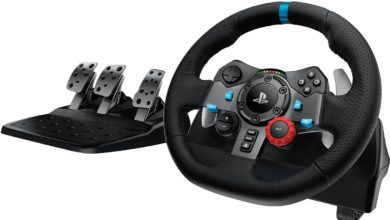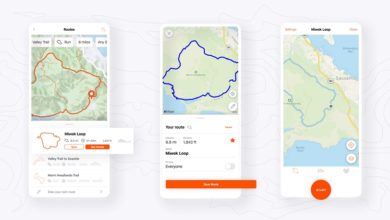Samsung Galaxy S : Lineup that stole crown from Nokia
It all started with the Samsung Galaxy S. HTC was the undisputed Android champion back then and Nokia still had the #1 rank among mobile phone makers. Samsung i5700 and i7500 smartphones brought Samsung into the limelight but it was the Galaxy S that turned Samsung Mobiles into overnight success.
This is the second article from the series ‘Product lineups that redefined a brand’. To learn about Motorola’s G series, head here.
Samsung Galaxy S
This is the phone that started all those Samsung vs Apple court cases. Released in June 2010, Samsung has sold more than 25 million units of GS. Till then, HTC has a stronghold on Android market and HTC Desire (first phone from Desire series) was a runaway success. Samsung needed something that is extremely good to tackle HTC and of course, Apple. The Samsung Galaxy S was exactly that!
With the Galaxy S, Samsung not only created a hit flagship smartphone series, they also created many product lineups. The Exynos chipset is one of the best performers, competing with Qualcomm’s Snapdragon. The Super AMOLED display is considered the best display tech for smartphones. Samsung has used memory (RAM and storage) that is build in-house given their expertise in semi-conductor field. In short, Samsung designed most components of the phone in-house and the end result created history!
The Samsung Galaxy S came with a 800×480 pixel resolution 4″ Super AMOLED display that looks absolutely gorgeous. The Samsung Hummingbird CPU core developed by Samsung and Intrinsity paved way for Samsung Exynos series. The chipset (Exynos 3110) turned out to be efficient, though let down by the laggy TouchWiz user interface. There was 512MB of RAM and 8GB/16GB storage options. Those who needed more storage could use a microSD card. Samsung Galaxy S came with Android 2.1 Eclair at launch and was later upgraded to 2.3 Gingerbread.
Key Features
- 4″ 480×800 pixel resolution Super AMOLED Display
- Exynos 3110 chipset (1GHz single core CPU, PowerVR SGX540 GPU)
- 5mp rear camera
- Wolfson WM8994 DAC for superior audio quality
- Bundled with Swype onscreen keyboard.
Samsung Galaxy S2
Mainly due to the court cases from Apple, Samsung had to design the S2 to ‘not’ look like the iPhone. The end result was a very ugly looking device. The Galaxy S2 is an example of ‘looks doesn’t matter’. Thanks to aggressive pricing, brilliant Super AMOLED Plus display and powerful Exynos 4 Dual chip, Samsung overtook Apple in smartphone sales in 2011. The best thinkg about the GS2 launch was ‘The Next Big Thing’ commercials that poked fun at Apple fanboys. And it did work! These commercials showed that Android phones come with better hardware, more features and faster network speeds. Thanks to the aggressive media campaign, Samsung managed to sell more than 5 million units in 3 months after releasing the S2 in Feb’2011.
<iframe width=”560″ height=”315″ src=”https://www.youtube.com/embed/GWnunavN4bQ” frameborder=”0″ allowfullscreen></iframe>
The Galaxy S2 looked like a demo unit with black boxy shell that is used by companies to hide the ‘actual’ design. But this phone’s success was mainly due to the superb display that made the Galaxy S’s old and stale. Also, Samsung had fixed most of the issues that plagued the Galaxy S (like the GPS issue, lack of camera flash, slow RFS file system). The 4.3″ 800×480 pixel resolution Super AMOLED Plus display was gorgeous, power efficient, had really deep blacks and great outdoor visibility.
The Samsung Galaxy S II was powered by Exynos 4210 chip with a dual core CPU and a powerful Mali-400MP GPU. The new chip gave the Galaxy S2 a significant performance jump over GS and was much more powerful than the competition. There was 1GB of RAM and 16GB of storage. As always, Samsung provided a microSD card slot for storage expansion. Samsung Galaxy S2 was one of the few phones at that time that supported NFC. Also new to the Android lineup was the USB OTG feature which meant that users could connect an external USB pen drive to the phone using an adapter.
Samsung Galaxy S2 came with Android 2.3 Gingerbread at launch and the phone was later upgraded to Android 4.1 JellyBean.
Key Features
- 4.3″ Super AMOLED Plus display
- Native support for NFC
- Powerful Exynos 4210 chip
- USB OTG
- Very lightweight and thin
Samsung Galaxy S3
Samsung Galaxy S3 is the phone that propelled Samsung into another galaxy. Released in May 2012, the GS3 was a massive hit from the day it released and Samsung sold more than 70 million of these. This is the phone that broke HTC’s back, a shock from which HTC never recovered. The 720p 4.8″ Super AMOLED display is simply breathtaking! The design looks absolutely fresh. Samsung had later released dozens and dozens of phone with same design language. And for those who loved colorful phones, the S3 came in various colors and the changeable back meant that users could mix and match. On the flip side, Samsung had added so much of bloatware to the TouchWiz interface that the Galaxy S3 would become very slow after few days of usage.
Powered by Qualcomm’s Snapdragon S4 or Samsung Exynos 4 chip, the Samsung Galaxy S3 had 2GB of RAM and 16/32GB of onboard storage that can be expanded using microSD card. Users had the freedom to replace battery or add microSD card for memory expansion. Those were the days when external power banks were not widely available and were expensive. I remember purchasing a 2650mAh power bank for 5000/-. The 4.8″ 720p display was a treat to the eyes. Samsung provided three different modes to set various color settings. The camera too turned out to be among the best.
Samsung Galaxy S3 came with Android 4.0 IceCream Sandwich at launch and the phone was later upgraded to Android 4.3 JellyBean.
Key Features
- Gorgeous 4.8″ 720p Super AMOLED display
- Great looks, super thin and light weight
- NFC, Wi-Fi Direct, Android Beam
- Wireless charging option
- Very good battery life
- Powerful chip, 2GB of RAM, 16/32GB storage
- Multi window mode, ambient light sensor
- S-Voice personal assistant
- Notification LED, motion gestures
Samsung Galaxy S4
This is when Samsung started to go backwards. The Samsung Galaxy S4 was very similar to the S3 in design, had even more laggy user interface, had no significant feature/design changes. The only saving grace was the dust and water resistance. Though there was a fullHD 1080p Super AMOLED display, the sheer number of bugs and the UI issues negated otherwise beautiful display. Samsung could only manage selling under 50 million units of Galaxy S4. Post Galaxy S3, there were over whelming number of phones with same design language. When S4 turned out to look lot like the GS3 and with no improvements to TouchWiz, loyals moved away. Released in April 2013, the Galaxy S4 was average selling phone.
The Samsung Galaxy S4 was powered by Samsung Exynos 5 Octa chip and had 16 GB, 32 GB or 64 GB of internal storage. At launch, GS4 came with Android 4.2.2 JellyBean and was updated to Android 5.0.1 Lollipop.
Key Features
- Water and dust resistance
- 5″ FullHD Super AMOLED Display
- IR Blaster
- Barometer, temperatore and humitidy sensors
Samsung Galaxy S5
This is the phone that made Samsung do soul searching. The Galaxy S5 was a massive flop for Samsung as the design was absolutely un-inspiring, TouchWiz was nightmare to use with too much of bloatware with minimal optimization. Such was the failure of this phone that multiple business units in Samsung reported massive losses and Samsung ended up performing organizational restructuring. That was the time when Samsung would bombard phones to markets that looked like the Galaxy S3. Yes, even after two years, Samsung would continue to use Galaxy S3’s design to release new phones. Released in April 2014, The GS5 was a major flop.
Given that there isn’t much to talk about this phone, lets move on to the phone that showed that unlike Nokia, Samsung’s management can learn from their mistakes.
Samsung Galaxy S5 came with Android 4.4.2 KitKat at launch and the phone was later upgraded to Android 6 Marshmallow.
Key Features
- Heart rate sensor
- Dust and water resistance
- Fingerprint scanner
- 4K video recording
Samsung Galaxy S6
Released in August 2015, the Samsung Galaxy S6 turned out to be a massive hit, thanks to a fresh design and powerful features. After the Galaxy S5 debacle, Samsung went back to drawing boards. This time, they needed a phone with premium materials, something that looked like a flagship. They need a phone that does not have any resemblance to past galaxy phones. With the S6, they did just that. The end result is that the Galaxy S6 sold in huge numbers.
The Samsung Galaxy S6 came with a 5.1″ 1440p Super AMOLED display that looks so much ahead of rival’s phones that one look at the display would make you buy the phone. The glass and metal design was an instant hit and was also colorful (especially the blue topaz). The Galaxy S6 shed waterproofing and removable battery features. But this did not stop consumers from buying one.
The Samsung Galaxy S6 not only looked much better, it was well ahead of competition when it came to processing power, the camera was much better and was among the very best, the battery life was also very good. In short, with the GS6, Samsung finally got the variant that could match the success of the Galaxy S3.
Samsung Galaxy S6 came with Android 5.0.2 Lollipop at launch and the phone was later upgraded to Android 6 Marshmallow.
Key Features
- Best smartphone display ever
- Perfect fit in hand, thanks to nearly no bezels
- Brilliant colors, premium looking design (metal and glass)
- Best smartphone camera (among Android phones)
- Powerful chip
- Quick Charge fast charging
Samsung Galaxy S7 and S7 Edge
Though the GS6 was a big success, it had a few flaws. Samsung Galaxy S7 is without any doubt the best Galaxy smartphone that Samsung has ever made. GS7 is as perfect a phone can be. The size was perfect, with very good fit in hand. The display is absolutely stunning. The GS7 is water proof, dust proof and supported native wireless charging. Released in March 2016, the GS7 is, even to this day, the best Android phone to get. It is still better than the phones released in 2017, well, except the LG G6. The S7 Edge, with dual edge curved display was even better to look at. You gotta see one to see how brilliant this phone is!
The Samsung Galaxy S7 came with an improved metal and glass design that was used in Galaxy S6. The GS7 was rated IP68 (water/dust resistance), with no protective flaps to cover the ports. The Exynos 8890 chip was very powerful and coupled with 4GB of RAM, scorched benchmarks and speed tests. The highlight though was the display. The 5.1″ 1440p QuadHD Super AMOLED display with extremely thin bezels was breathtaking to see. One major headache with previous Samsung phones was the TouchWiz interface. With GS6 and GS7, Samsung toned it down to a great extent. The new version was lightweight and it was made even lighter with GraceUX update released in 2017.
Samsung Galaxy S7 came with Android 6 Marshmallow at launch and the phone was later upgraded to Android 7 Nougat.
Key Features
- Best smartphone display ever, s7 edge dual curved display
- Perfect fit in hand, thanks to nearly no bezels
- Water and dust resistant
- Wireless fast charging
- Brilliant colors, premium looking design (metal and glass)
- Best smartphone camera (among Android phones)
- Always on display



